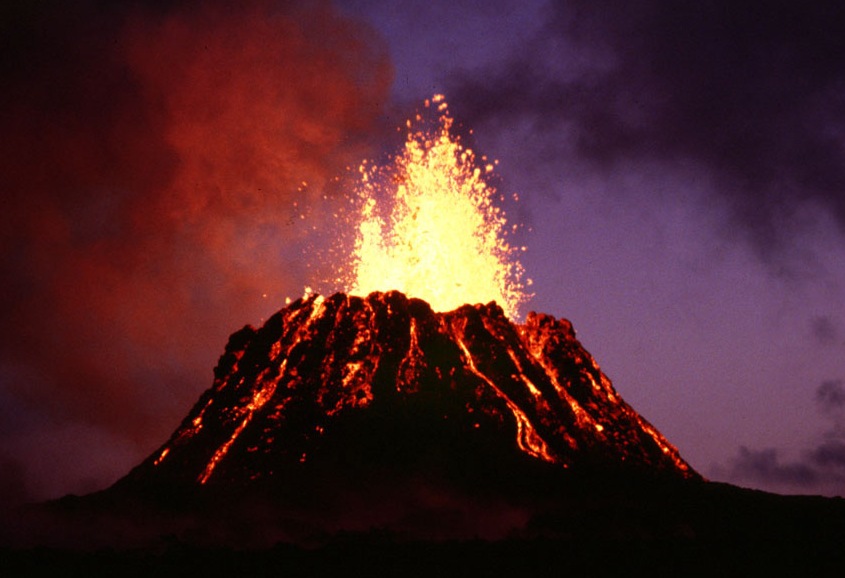The eruption of a volcano can be nature’s one of most terrifying events. A volcano is a vent or fissure where magma from the Earth’s hot interior emerges onto the surface. In some places, the molten rock, called lava once it has emerged on to the surface, oozes out slowly and gently. But in others, the eruption is a violent as well as dangerous explosion, flinging out molten lava, red hot lumps of rock, scorching ash, and clouds of steam which spread for kilometers.
 Volcanic Phases
Volcanic Phases
All volcanoes, on land and under the sea, are at different stages in their life cycles. Some volcanoes are very active, erupting year after year. Others are dormant and erupt only once in a while. Many more are extinct – meaning they have stopped erupting altogether. Volcanologists monitor active and dormant volcanoes to try to predict eruptions.
Extinct:
Once a volcano is extinct, it will begin to be eroded by wind and weather. All that remains of this extinct volcano in Le Puy, France, is the hard plug of material that once clogged the volcanoes’ vent.
Active:
Some volcanoes erupt almost continuously, while others erupt very violently but only at infrequent intervals. Each year there are about 25 major volcanic eruptions on land and thousands of minor ones, the most deadly eruption being in Indonesia with a loss of nearly 10,000 lives.
Types of volcano
 Volcanoes are of different shapes and sizes, depending on the thickness of their lava and the shape of their vents.
Volcanoes are of different shapes and sizes, depending on the thickness of their lava and the shape of their vents.
Shield volcanoes are broad, shallow cones made of very runny lava that flows easily.
Fissure volcanoes are long cracks in the ground through which the magma oozes up gently.
Composite cones are built cinder volcanoes have concave shaped cones made of the solid fragments ejected by eruptions.

Types of lava
Lava is the molten rock thrown out by a volcano. The most common forms of lava are basalt, which is thin and runny, and cools to a heavy, black rock, and rhyolite, a thick, pale, biscuit colored lava. How a volcano erupts depends on the lava’s thickness.
Acidic:
Very viscous lava flows such as this one are usually linked to acidic magma, which contains a high proportion of the mineral silica.
Aa:
In Hawaii, where Mauna Loa is erupting almost all the time, Lava that solidifies into sharp jagged chunks is known as Aa, or block lava. Lava in this part of the world is basic, which means it is non-acidic.
Pahoehoe:
Lava may cool quickly to form a skin tough enough to walk over. If lava continues to flow underneath, the surface wrinkles into rope like coils. In Hawaii this is called Pahoehoe, or corded lava.

Volcanic landscape
In volcanic areas, underground heat may create other effects on the surface as well as volcanoes. Hot gases may billow out through fissures, for instance, while the heat of rocks underground may be enough to boil groundwater, creating jets of water or bubbling mud pools.
Volcanic features
Volcanoes and volcanic activity leave behind all kinds of distinctive features in the landscape to bear witness to their ferocity and heat – sometimes relies of the outpouring of lava, sometimes relics of their effect on landscape features.

